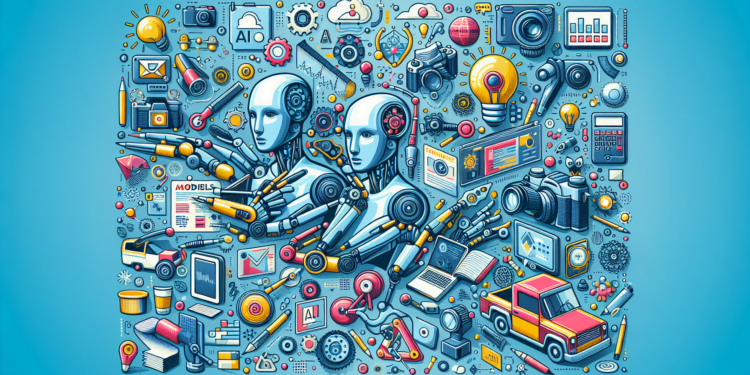Artificial Intelligence (AI) has established itself as a fundamental field in the landscape of technological innovation. Its rapid evolution and application across different sectors demand a well-grounded understanding of its models and key concepts. This article delves deep into the essential elements of AI, aimed at an expert reader looking to update their knowledge and understanding of the discipline.
Machine Learning Models
Supervised Learning
It is the most common approach in machine learning, where an algorithm is trained on a set of labeled data. The goal is for the model to learn to predict or classify new data based on the relationships discovered during its training.
Unsupervised Learning
In contrast to supervised learning, unsupervised learning does not use labeled data. Algorithms attempt to identify patterns or natural groupings in the data without prior reference, which can be useful for anomaly detection or market segmentation.
Reinforcement Learning
In reinforcement learning, the algorithm learns to make decisions based on feedback from its performance in a dynamic environment. It seeks to maximize a reward over time, being applied in fields as diverse as robotics and strategy games.
Neural Networks and Deep Learning
Artificial neural networks are inspired by biological neural networks. They consist of nodes or “neurons” connected in layers, each of which performs transformations of the input data. When a neural network has many hidden layers between the input and output, it is called a deep learning network or “Deep Learning”. These networks are particularly powerful for tasks such as image recognition, natural language processing, and more recently, in content creation with models like GPT-3.
Fundamental and Recent Algorithms
Classification Algorithms
- Decision trees
- Support Vector Machines (SVM)
- Neural networks
- Ensemble algorithms like Random Forest
Regression Algorithms
- Linear and logistic regression
- Neural networks
Clustering
- K-means
- DBSCAN
- Hierarchical algorithms
Dimensionality Reduction
- Principal Component Analysis (PCA)
- T-distributed Stochastic Neighbor Embedding (t-SNE)
Recent Advances
In the cutting-edge field of AI, innovations emerge every day. Transformer models have revolutionized natural language processing with a structure that allows models to consider the context of each word in a text more efficiently. Advances in unsupervised and semi-supervised learning are paving the way for a new generation of models that require less labeled data, reducing training time and cost.
Comparisons and Case Studies
Comparing these models and algorithms is crucial to understanding the strengths and weaknesses of each. Comparison metrics often include accuracy, generalization ability, and computational efficiency.
Case studies demonstrate the practical application of these models in the real world. A notable case is the use of neural networks in the early detection of diseases through medical imaging, which has significantly improved diagnostic accuracy.
Ethical, Economic, and Social Implications
The adoption of AI is not without challenges. Ethical issues related to data bias and model transparency are critical. Economically, AI is laying the groundwork for automation in entire industries, raising questions about the future of work. Socially, AI-based systems are transforming human interaction, from retail to healthcare.
Future Directions
Looking ahead, we anticipate developments focused on creating even more efficient and explainable models, narrowing the gap between theoretical potential and practical utility. Researchers are seeking to improve the reliability and safety of AI systems, working on robust models that can handle imperfect data and unanticipated situations.
In conclusion, the concepts and models of artificial intelligence open up a world of possibilities in all fields of human knowledge. Knowing in detail the fundamentals, advancements, and applications of AI is essential for any professional or enthusiast who wishes to stay at the forefront in this era of unprecedented innovation.






















